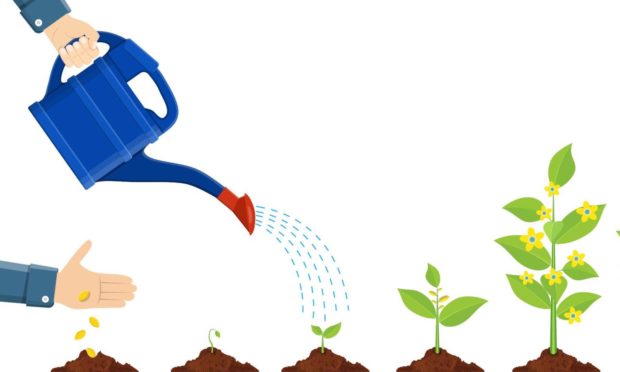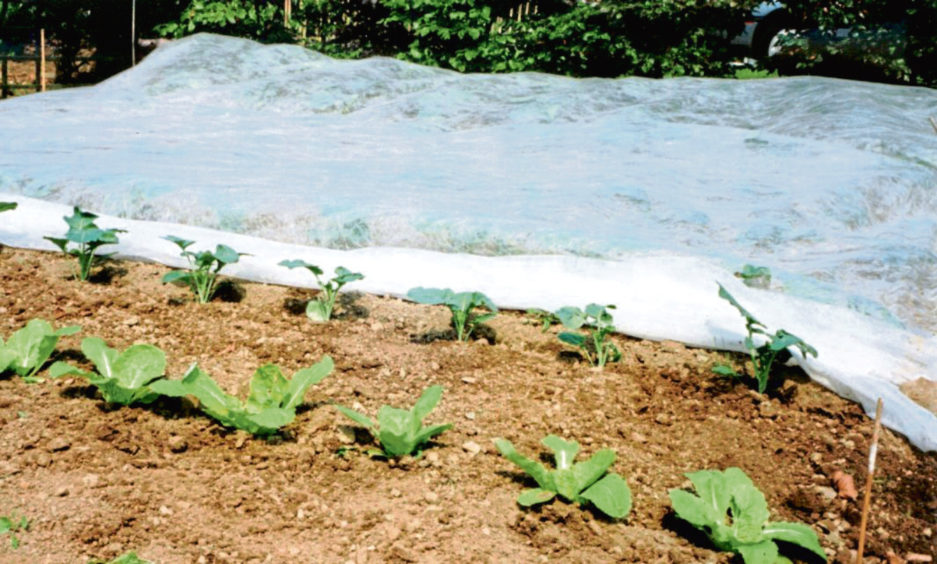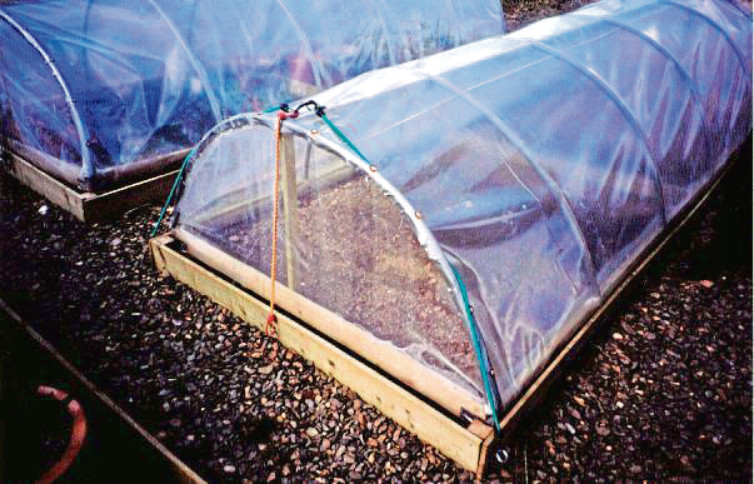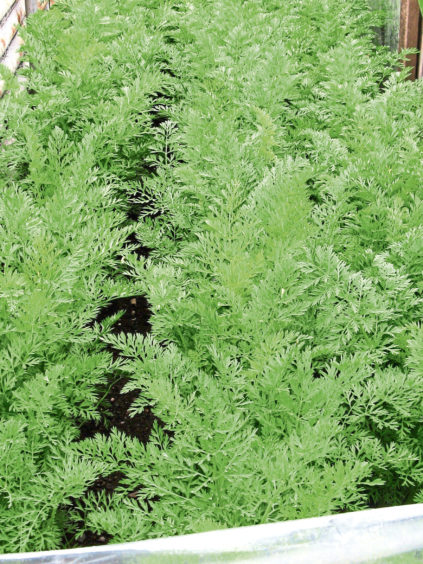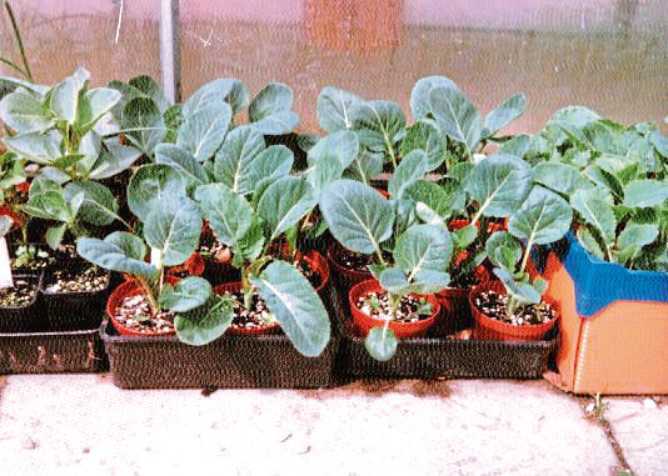As the season for filling the vegetable plot gains momentum, it is perhaps time for a word on direct sowing and/or planting.
These techniques apply to many plants, decorative and edible.
Why do we sow some vegetable seeds straight in to the open ground while others are raised elsewhere and eventually planted out as young individual plants?
It is related to our weather and best use of space. There is also a technical element
The UK’s outdoor growing season starts from February in the far south west of England and in April for most of Scotland.
The start of the growing season is a relationship between prevailing weather patterns and their effects on the soil with special emphasis on soil temperatures at planting/sowing depth.
Soils reach optimum conditions depending on their location and make-up.
A classic example is arable ground on the coastal strip of South Ayrshire noted for “early potatoes”.
There it is a combination of latitude, seaside location and soil type.
If you happen to garden on a heavy, moisture-retentive clay soil the ground may not be in a state ready for sowing direct until early May.
Sowing seeds
I guess that most people gardening in Scotland will be sowing seeds direct on open ground from now on.
The smart guys will already have realised that, by covering an area with cloches or even a plastic sheet, you can speed up the drying out and warming up the soil to be able to cultivate it, getting a friable medium for sowing the finest of seeds. (Friable means able to be reduced to an even, reasonably fine particle size, still slightly moist and easily made ready by gentle cultivation.)
The next consideration relates to two elements, let’s stick with vegetables and how we grow them.
Some are grown for harvesting of the root – that’s maybe obvious but there is a big difference between techniques for growing potatoes compared to carrots, radish, parsnips and turnips.
We plant a single potato tuber at a given spacing to produce the crop. When it comes to the others, we sow the seeds, which are far smaller, by dribbling them along a shallow drill about 2.5cm to 3cm deep, and when the seedlings appear we thin them out to allow remaining specimens space to mature. (Drill depth relates to the size of the seed sown. Broad beans might be planted at 3cm to 5cm deep.)
Seeds are comparatively cheap to produce, so the fact we throw away seedlings that have been thinned out is of little consequence.
Even so, why not transplant the thinned seedlings? You can try, it is not impossible, but the rate of success will be poor.
Why? The carrot which we cherish is botanically a biennial, in other words it grows in year one producing a storage organ (the tap root), rests in the ground over winter and starts into growth in year two when it will flower and seed.
If that seedling taproot is damaged at all in year one when being transplanted, the plant will bolt in year one, in other words, it will not produce an edible carrot, but it will try to flower.
That is why we sow as thinly and sparsely as possible.
Usually grown in rows about 30cm apart, when the seedlings appear, they can be thinned to something like 5cm to 10cm apart space enough to produce good-sized roots.
One technique that attempts to overcome this problem is called pelleting.
Some small-seeded vegetables are available, encased in a pellet, allowing them to be sown singly at the optimum space to produce an acceptable yield.
They may be a great boon to commercial growers, but frankly, where available they are more expensive and I never bother with them.
I can immediately hear the question “why rows 30cm apart?” It happens to be quite a convenient distance for direct sown crops and indeed some planted types too, lettuce for example, to allow access to hoe and weed the ground in between while allowing the foliage to develop sufficient to harvest a good crop.
Handy size for planting
Which takes me on to the alternative method of vegetable propagation and that is raising the plants in containers in glasshouse cold frame window ledges, growing them on to a size handy for planting.
I recently mentioned that I have always grown my onions from sets starting them in the greenhouse. Funnily enough the onion is a biennial like the carrot et al, but in this case at the end of year one, the mini-onion bulbils can be dried off, given a heat treatment then stored.
When the little dormant bulbs known as “sets” are planted in year two, they simply keep growing.
Anyway, my Sturon sets have started to grow, planted in sections in the unheated greenhouse. They won’t be planted out until late May.
Many other vegetables are traditionally raised in containers for two reasons – some need quite a long growing season and if started by direct sowing in the garden, they would occupy the area for rather a long time.
Raised in containers, when planted out they will take up the space to cropping in a much shorter time.
Spaced planting ties in with the choice of varieties you grow to suit your needs.
If there are only two mouths to feed, you can pick varieties that mature at a small size, hence they can be planted close together so you have more of them.
Later in the season as gaps begin to appear, you can pop in container-raised plants to fill gaps, maximising your returns.
Just space to link that last point to a visit I made some years ago, with a party of people, to the gardens at Balmoral Castle.
The party was split in two lots, HM Queen Elizabeth taking one group and the other, which I was in, conducted by Prince Philip, who was brilliant as he explained his involvement. We ended up in the kitchen garden where cabbages were twice the size of a football.
Lots of great chat about fertiliser techniques and numbers of mouths to feed.
